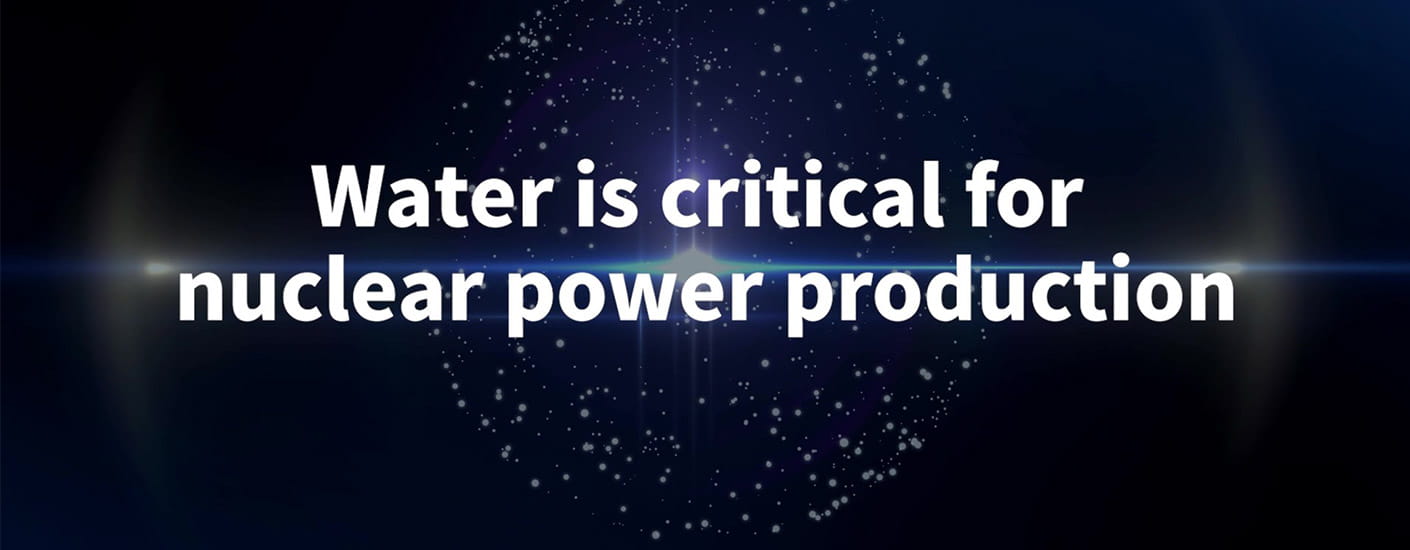Despite its imperfect reputation, nuclear power is one of the most promising and reliable power generation technologies in the energy transition toolbox. But it’s not new by any means. Large-scale plants have been providing low-carbon intensity power in many countries across the world since the late 1950s.
Recent advancements are revitalizing the prospects for this mid-century technology. One of the more interesting developments comes in the form of Small Modular Reactors, or SMRs, which can produce up to 300 megawatts (MWe) of electric power per module.
Wherever they are used, and however large or small, nuclear reactors use water.
In the United States, the amount of water used in thermoelectric power generation is a significant portion of total water use at around 41 percent. Within this water use fraction, the portion used by nuclear power plants is around one-fifth, similar to nuclear energy’s contribution to total electrical output.
US freshwater withdrawals, 322B gal/day
On a per-unit output basis, nuclear power is slightly more water intense than coal power, but slightly less water intense than coal power with carbon capture and sequestration (CCS).
Water supply, treatment, and management are important considerations regardless of why nuclear power is in prospect.
Small and modular means more options.
The shift to smaller reactors opens up the potential to use nuclear power instead of petroleum-based energy in many new applications. SMRs could replace fossil fuels for both on-and-off-grid electricity generation in both urban and more remote areas. Our clients are looking at using SMRs for clean hydrogen production, desalination, district heating, chemical processing, and so much more.
Further afield, their capability, flexibility, and inherent safety features mean that SMRs will likely power the first human settlements on the Moon and even Mars.
Light water small modular nuclear reactor.
Currently there are scores of different SMR concepts being studied and in different stages of development/licensing. Categorized here by type of cooling material:
- Advanced Small Modular Water-Cooled Reactors use water as a coolant and are smaller than traditional light water reactors
- Gas-Cooled Reactors are cooled by flowing gas and designed to operate at high temperatures
- Liquid Metal-Cooled Fast Reactors use metal (sodium or lead) as a coolant instead of water, allowing the coolant to operate at a higher temperature and lower pressure than current light water reactors
- Molten Salt Reactors use molten fluoride or chloride salts as fuel/moderator and coolant. These also operate at a high temperature and low/ambient pressure.
Regardless of what the internal heat transfer material is ultimately when the heat gets rejected – water is required.
Repowering with SMRs.
Replacing fossil fuel-fired boilers in steam power plants is one attractive use for SMRs. This retains the existing steam turbine equipment and other systems while eliminating emissions to generate steam.
Roughly 1,650 lb/MWh of greenhouse gas emissions in a black coal plant is reduced to nearly zero with SMR repowering. NOx, SOx, particles, and other emissions are also eliminated. This reduces water demand notably for combustion gas scrubbers. But the water demand for cooling remains. And there may be some minor new demands.
Water has always been an essential feature of nuclear power generation.
Regardless of how big or how small a nuclear power plant is, water is critical. Water use for SMRs will vary depending on the type of SMR used and the application.
Typical cooling water withdrawals and consumption rates in US thermal power plants, including nuclear plants
Water use for any type of nuclear power plant, including SMRs, resembles that of other fuel combustion-based power plants which include a steam cycle. Power plants like these are known as Rankine cycle or thermoelectric plants. The Rankine cycle is the most widely used thermodynamic cycle in nuclear and coal-fired power plants.
In 2021, Rankine cycle systems provided roughly 70 percent of the electricity in the US economy.
Although there are many options that could be used as the working fluid in the Rankine cycle, water is typically the fluid of choice due to its abundance, low-cost, chemical makeup and other favorable properties. It’s important to note that although some of the water circulating in a Rankine cycle system can be retained, much of the cooling water makeup is lost in the process.
The key water features in the Rankine cycle are steam generation, subsequent condensation, and waste heat rejection. They require specialized water treatment systems to produce very high-quality boiler feed water. And, a large amount of cooling water is required for heat rejection in the turbine exhaust condenser.
Water-cooled reactors and SMRs have an additional water requirement for spent fuel cooling and maintenance. Additional treatment may be required for water that comes into contact with the fuel or spent fuel.
Some SMRs can be air-cooled, or rely on other cooling processes (such as district heating) resulting in reduced water requirements.
High purity water requirements.
The ultrapure water required for nuclear boiler feedwater has traditionally been produced using similar methods to those used in coal-burning power plants. This water treatment process has been primarily based on chemical intense ion exchange demineralization processes. New demineralization technology using membrane separation is now available. These new systems use less chemicals and are becoming widely used across the industry.
Zero liquid discharge.
The decision makers at modern power plants are often selecting zero liquid discharge (ZLD) wastewater systems rather than discharging concentrated saline wastes to local waterways. This is usually a more environmentally sustainable option but adds complexity to the water treatment systems. ZLD requires specialized equipment to process and recycle all of the wastewater from a power plant. However, in some cases it can provide valuable by-products from what was previously waste.
We design and operate ZLD facilities at major power plants.
The ZLD facility at a large thermoelectric power plant where Worley operates all ancillaries, including the sophisticated ZLD system.
How can we help you?
The Worley Group has strong experience in nuclear power, including SMR systems, and we’re experienced in evaluating technologies for repowering, planning new facilities, and testing market opportunities.
When it comes to the water systems that make nuclear power possible, we have experience in surface drainage, steam/water systems, dynamic evaluations, cooling water system design and troubleshooting, ultrapure water systems for nuclear generating stations, water intake structures, hydrazine treatment facilities, tritiated Water, and more.
We're here to help you 'waterproof' your energy transition projects. Reach out today: WET@advisian.com







